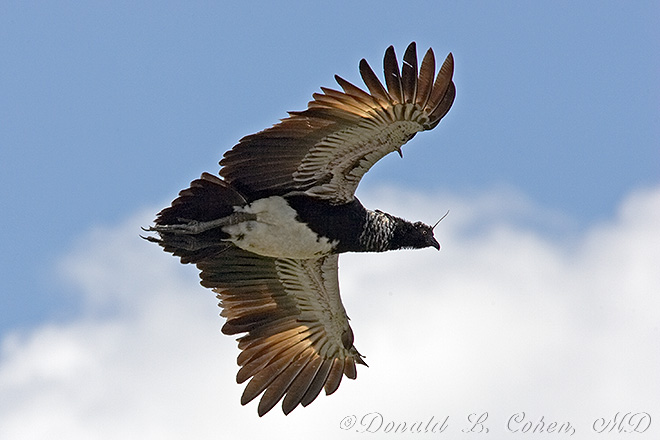Another shot from my recent Amazon Voyage, this is of a species I had never heard of nor seen before. These are fairly large birds, which generally were quite a long ways from us. As we were speeding down the river one afternoon, I spotted one of these on a tree-top at the shore, and took a few shots. As we passed by it, it took off, and I was in a good position to get a series of flight shots.
The light was mid-day, and the blacks were so deep that getting much shadow detail was near impossible. But it does show the "horn" on its head, the basis for the first part of its name. I also like the spikes on the leading edge of its wings, similar to what I've seen on Southern Lapwings.
Canon 1D Mark II
Canon 100-400L/f4.5-5.6 IS with 1.4x II Teleconverter
ISO 640, f/10, 1/2000 second - Manual Exposure
Handheld

Comments, criticism, questions always welcome.
I just posted a Video from the trip on YouTube, but it's still being processed. Will provide a link once it's ready.
The light was mid-day, and the blacks were so deep that getting much shadow detail was near impossible. But it does show the "horn" on its head, the basis for the first part of its name. I also like the spikes on the leading edge of its wings, similar to what I've seen on Southern Lapwings.
Canon 1D Mark II
Canon 100-400L/f4.5-5.6 IS with 1.4x II Teleconverter
ISO 640, f/10, 1/2000 second - Manual Exposure
Handheld

Comments, criticism, questions always welcome.
I just posted a Video from the trip on YouTube, but it's still being processed. Will provide a link once it's ready.
